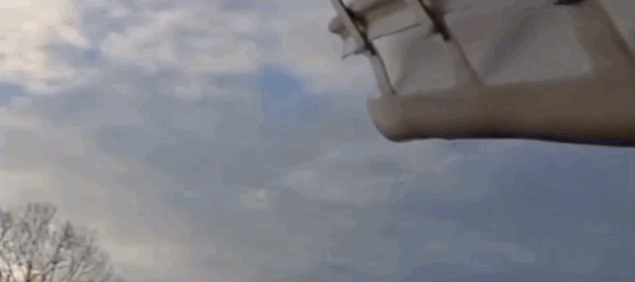Shooting Fish Way Over the Barrel
Salmon have interesting migration and reproduction habits. They’re born upstream in rivers, in gravel beds. They spend most of their developmental years in those rivers, but by adulthood, the fish swim downstream, making their way to the ocean. While swimming in the Atlantic or Pacific, these adult salmon eat and swim until its time to spawn. At that point, the fish head back to the rivers (often the river from which they came) and swim upstream until they reach the gravel bed, start the next generation of salmon, and die.
Ecologically, this return to the river is important — the deceased fish brings vital nutrients from the ocean back upstream, and in most other cases, those nutrients wouldn’t ever find their way there. Unfortunately, humans have a tendency to get in the way: we build dams, holding back rivers and blocking the path of the spawning fish. We’ve come up with some work-arounds, the most common of which fish ladders, which run alongside dams, allowing fish to swim upstream; Wikipedia’s explanation, here, has a lot of great pictures. But those are expensive and often take a long time to build, so researchers are looking for other solutions.
Such as shooting fish out of a cannon.

Okay, it’s not really a cannon — it’s more akin to a pneumatic tube, to be fair. But “salmon cannon” sounds much better, right?
The cannon, created by a company called “Whooshh Innovations,” a Washington-based company dedicated using such methods of transportation in various new contexts. Transporting fish above dams seemed like a good use, so they built a set of prototypes. Here’a video of the cannon in action — the gif above comes from it (via io9):
The salmon cannon can transport a fish up to 250 feet (with a 100 foot incline), according to NPR, at speeds approaching 22 miles per hour — that’s about a eight second trip for the fish. Mental Floss reports that the tubes can transport 40 fish per minute, which is apparently a lot. It is still highly experimental, but it has promise: officials are already testing it out in hopes that it works.
 Bonus Fact: Another Whooshh experiment, per the same NPR article linked above, was an attempt to transport potatoes using similar technology. But in this case, the tuber tubes had a neat bonus feature — a set of blades at the output end. The potatoes went in whole, and came out as uncooked french fries.
Bonus Fact: Another Whooshh experiment, per the same NPR article linked above, was an attempt to transport potatoes using similar technology. But in this case, the tuber tubes had a neat bonus feature — a set of blades at the output end. The potatoes went in whole, and came out as uncooked french fries.
From the Archives: Off the Hook: Technology + fishing + crime = a fun story with a punny headline.
Related: The best book about fish ever written.
